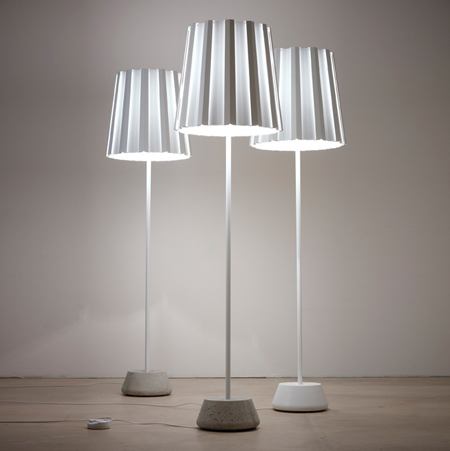
NAN18 by Jörg Boner and Christian Deuber for Nanoo
Cologne 2010: Swiss Designers Jörg Boner and Christian Deuber were named winners of the interior innovation and best item awards at imm Cologne 2010 last week for their concrete and metal floor lamps.
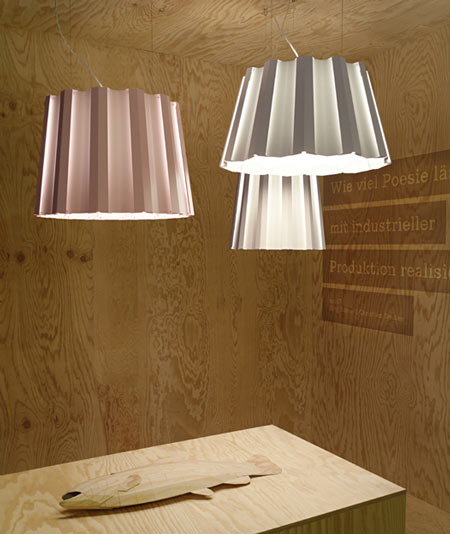
Called NAN18, the floor lamps join the previously designed NAN17 ceiling lights for Swiss brand Nanoo to form a collection of lamps with pleated metal shades.
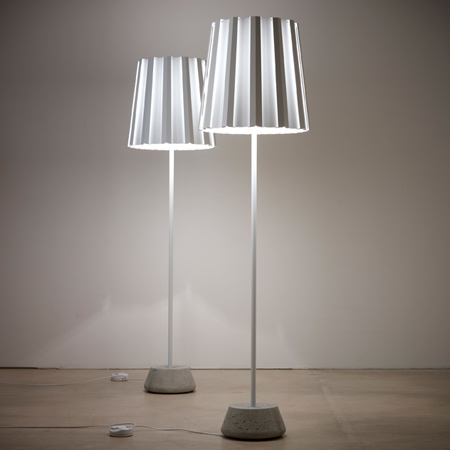
Individual steel slats are arranged to create a cone, from which light indirectly reflects out to give the illusion of a translucent fabric shade.
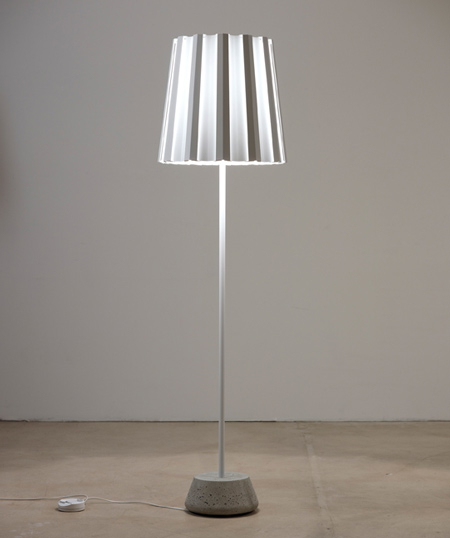
The floor lamps have exposed concrete bases in either white or grey.
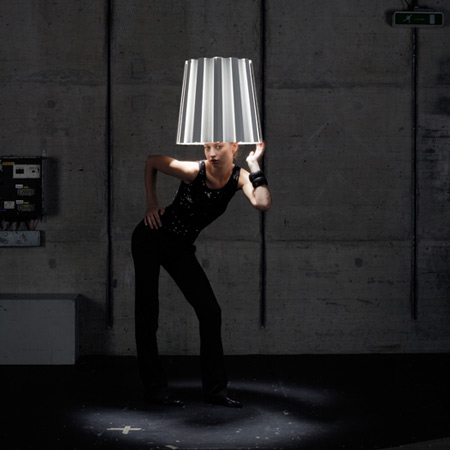
Photographs are by Hans-Jörg Walter. Photographs including models have been taken by Christian Schnur.
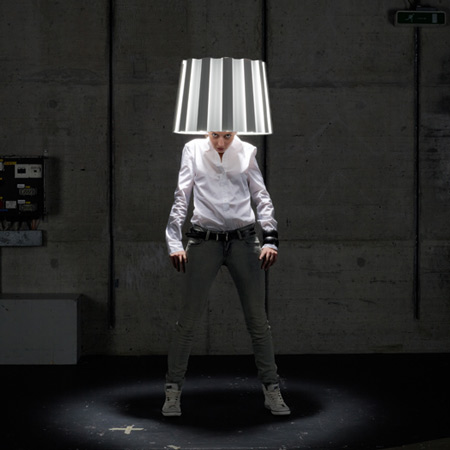
Below is some more information from the designers:
--
floor lamp NAN18
for nanoo (CH), 2009
NAN18 is a standard lamp. The lamps comprise individual tin slats, arranged circularly to create a conic lampshade. The emergent light is soft and atmospheric. It falls as direct light through an opaque sheet of acrylic glass. Indirect light rises towards the ceiling. The arrangement of the individual slats results in the play of an atmospheric surround light on the outer shell.
The lampshade stands on a stainless steel tube, which is also white.
A concrete socle, either in white or naturally coloured concrete, creates the base for the standard lamp.
Specifications: sheet steel 0.7 mm, powder-coated
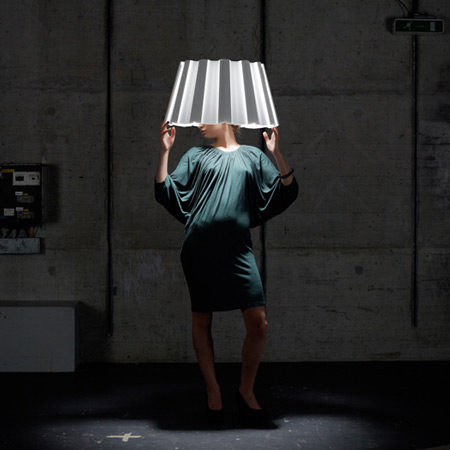
Ceiling light NAN17
for nanoo (CH), 2008
This hanging light consists of tin slats that form a translucent structure. The assembled parts form a lampshade.The resulting light is soft and atmospheric.
Specifications: sheet steel 0.7 mm, powder-coated
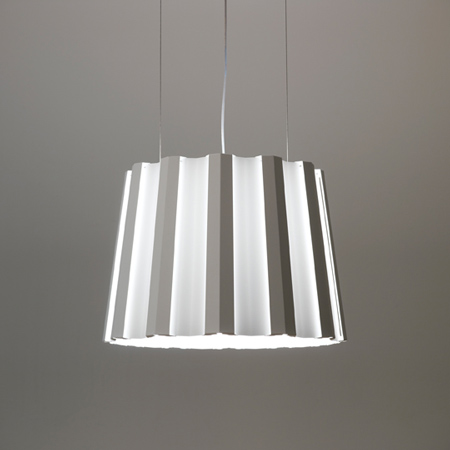
The predecessor of the NAN17, a custom made object for the senior citizens home in Untersiggenthal (CH), as a hanging version in the tea kitchen. Our design was realised in 60 objects. The point of departure was a context conventionally shunned for its dusty textile lamp shades. We worked with the beautiful aspects of these shades: their pleated structure. Individual tin slats form a translucent lamp shade.

Designer's voice:
"...When does poetry ever rhyme with industrial production? Take this as a shining example..."
Interview with Jörg Boner and Christian Deuber:
nanoo: How did nan17 come about?
Jörg Boner and Christian Deuber: In the best possible way that a design can – from real life and based on a genuine need. The Meier/Leder team of architects from Baden won a competition and was looking for a partner to provide the right kind of lighting for a new institutional building for residential use – bright and modern, and yet not without warmth. Our proposal was implemented in 2007 in 60 different installations specific to the design of the building. The result was received with great enthusiasm, so much so that it was further developed for general use and sold through up - market design stores.
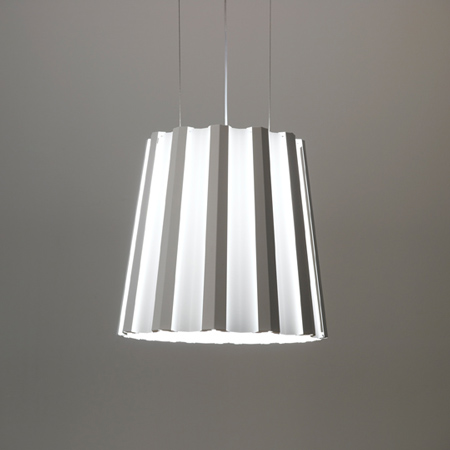
So NAN17 is the result of following one of the classic principles of design ...
Exactly! This kind of development has come up repeatedly throughout the history of design. In 1961 for example, Achille Castiglioni developed a light for the famous “Splügen Bräu” bar in Milan. After the opening of the bar, the light found its way into a light collection that was on general sale and is still available today as part of one of the most important Italian design collections.
What defines the NAN17 aesthetic style?
The starting point was an environment that is traditionally seen as being old and stuffy – cloth lampshades. We took the nicer part of these shades, namely the folds, and applying a contemporary aesthetic and technical vocabulary, we managed to create a surprising contrast of real innovative quality – it’s romanticism in its most modern form!
And how does NAN17 work in technical terms?
The lamp is made up of individual metal blades laid out in a circle to form a crown-shaped lampshade. The lighting works in three ways. From below, direct light comes through opal Perspex. Then there is indirect lighting up to the cover, while on the outside, atmospheric ambient lighting is created by the configuration of the blades.